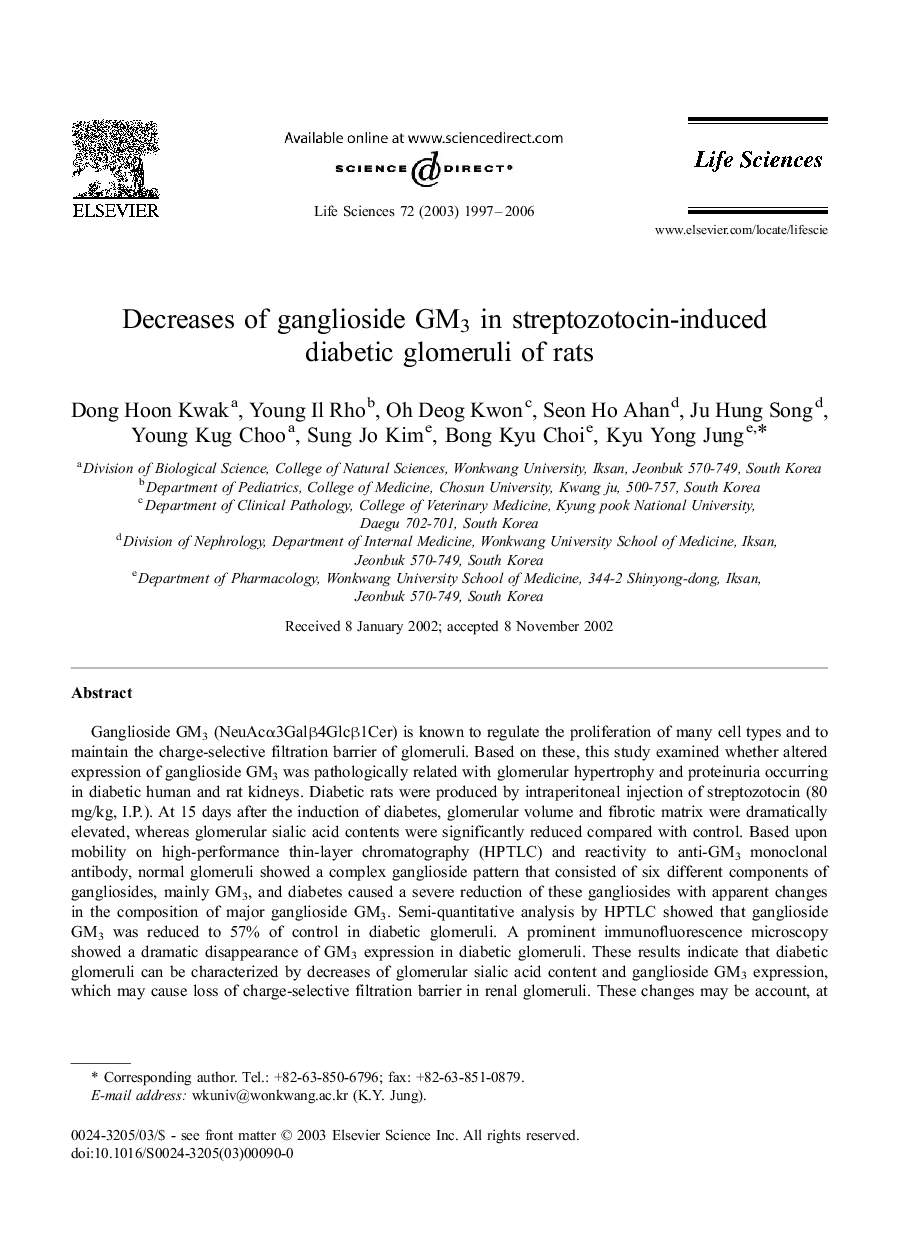| Article ID | Journal | Published Year | Pages | File Type |
|---|---|---|---|---|
| 2556056 | Life Sciences | 2006 | 10 Pages |
Abstract
Ganglioside GM3 (NeuAcα3Galβ4Glcβ1Cer) is known to regulate the proliferation of many cell types and to maintain the charge-selective filtration barrier of glomeruli. Based on these, this study examined whether altered expression of ganglioside GM3 was pathologically related with glomerular hypertrophy and proteinuria occurring in diabetic human and rat kidneys. Diabetic rats were produced by intraperitoneal injection of streptozotocin (80 mg/kg, I.P.). At 15 days after the induction of diabetes, glomerular volume and fibrotic matrix were dramatically elevated, whereas glomerular sialic acid contents were significantly reduced compared with control. Based upon mobility on high-performance thin-layer chromatography (HPTLC) and reactivity to anti-GM3 monoclonal antibody, normal glomeruli showed a complex ganglioside pattern that consisted of six different components of gangliosides, mainly GM3, and diabetes caused a severe reduction of these gangliosides with apparent changes in the composition of major ganglioside GM3. Semi-quantitative analysis by HPTLC showed that ganglioside GM3 was reduced to 57% of control in diabetic glomeruli. A prominent immunofluorescence microscopy showed a dramatic disappearance of GM3 expression in diabetic glomeruli. These results indicate that diabetic glomeruli can be characterized by decreases of glomerular sialic acid content and ganglioside GM3 expression, which may cause loss of charge-selective filtration barrier in renal glomeruli. These changes may be account, at least in part, for the development of glomerular hypertrophy and proteinuria seen in the early stage of diabetic glomerulopathy.
Keywords
Related Topics
Health Sciences
Medicine and Dentistry
Cardiology and Cardiovascular Medicine
Authors
Dong Hoon Kwak, Young Il Rho, Oh Deog Kwon, Seon Ho Ahan, Ju Hung Song, Young Kug Choo, Sung Jo Kim, Bong Kyu Choi, Kyu Yong Jung,
